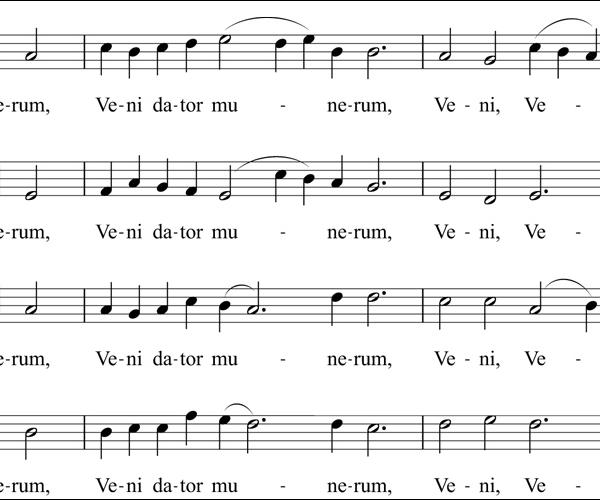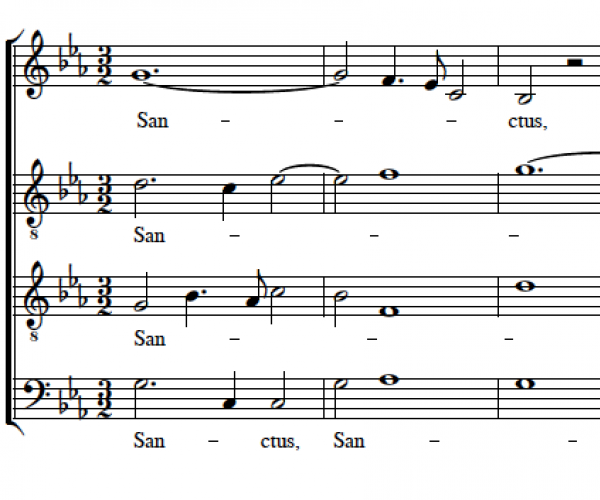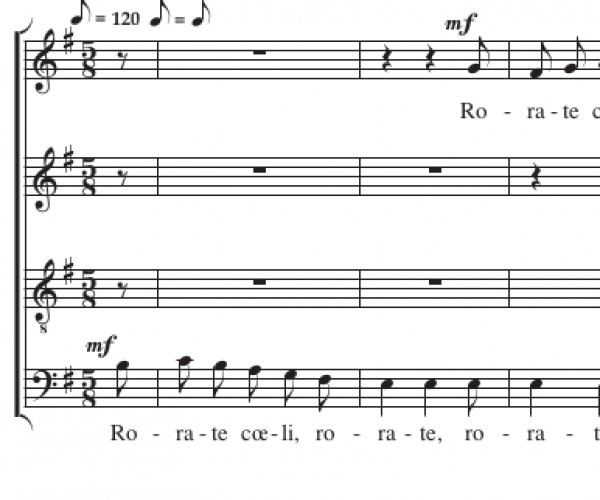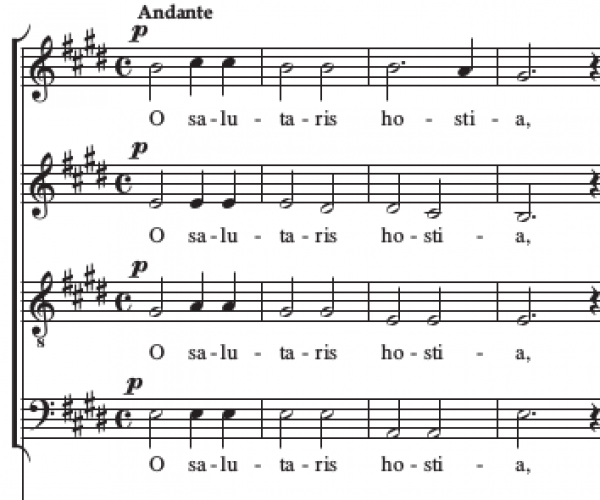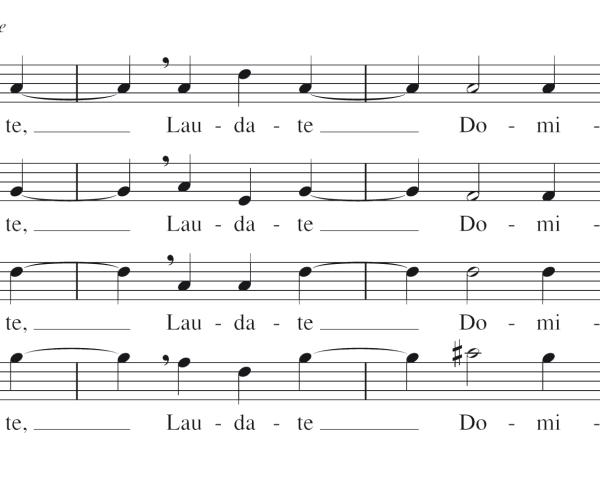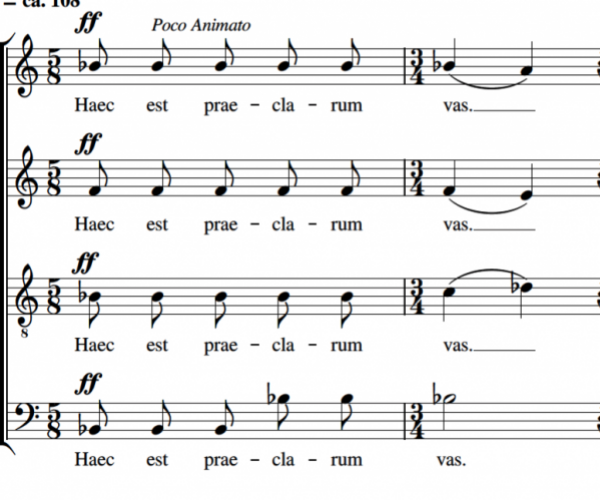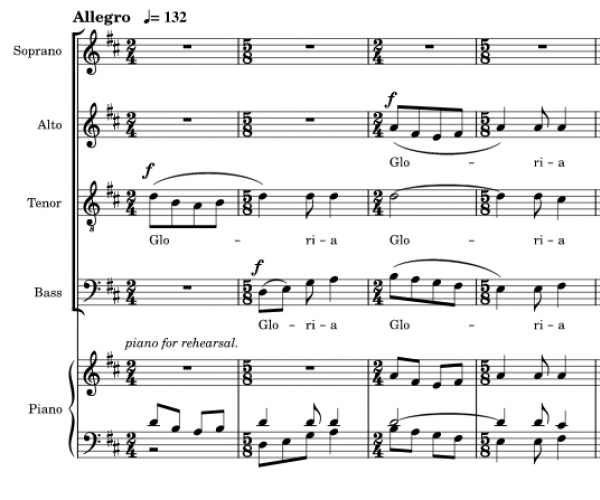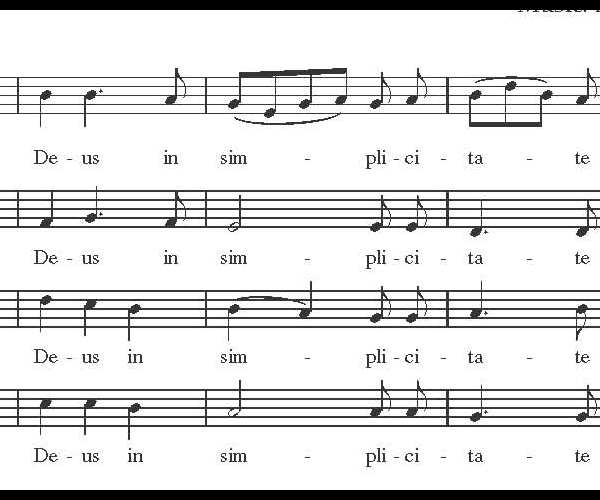Scores
In Veni Sancte Spiritus Frank Agsteribbe combines pure Gregorian chant with simple homophonic settings into a tasteful whole.
This mass has no exact composition date and originated somewhere between 1450 and 1480.
Jan Van der Roost's Rorate Coeli was first published in 2009. It's an excellent work of easy to moderate difficulty.
O Salutaris Hostia is a simple but very beautiful four-part work that appeared with the Koor&Stem magazine Stemband in September 2011.
Laudate Dominum by Sebastiaan van Steenberge is a challenge for an amateur choir and a refreshing liturgical work.
An accessible four-part motet written for the European Music Festival of Youth, Neerpelt in 1977.
The Missa Nubentium - in nubes progredientium was written for the wedding of his daughter Tineke: Mass for those who marry, advancing in the clouds.
Ego sum vitis vera (I am the true vine) is a communion song. The beautiful text inspired the composer to create a composition with a drive and a storyline through a play between male and female choir, surrounded by flowing and natural lines and uplifting sound auras. Rhythmically, this is not an easy piece, but once the score is mastered, the fruits are all the sweeter.
Paul Steegmans wrote a simple religious work: Ego sum panis, suitable for liturgy or concert.
With Domine Deus in simplicitate, Ludo Claesen takes us to Gregorian chant. The beginning of the composition refers to the original melody of the Gregorian hymn. Claesen does not literally copy the melody line, but retains the idea behind the practice: the melismatic singing or in other words, the singing of several notes on a syllable.
Pages
Register for our newsletter
We keep you informed 4 times a year about repertoire news, info about Flemish composers, new acquisitions in our library, webshop or freely downloadable scores on Koorklank

